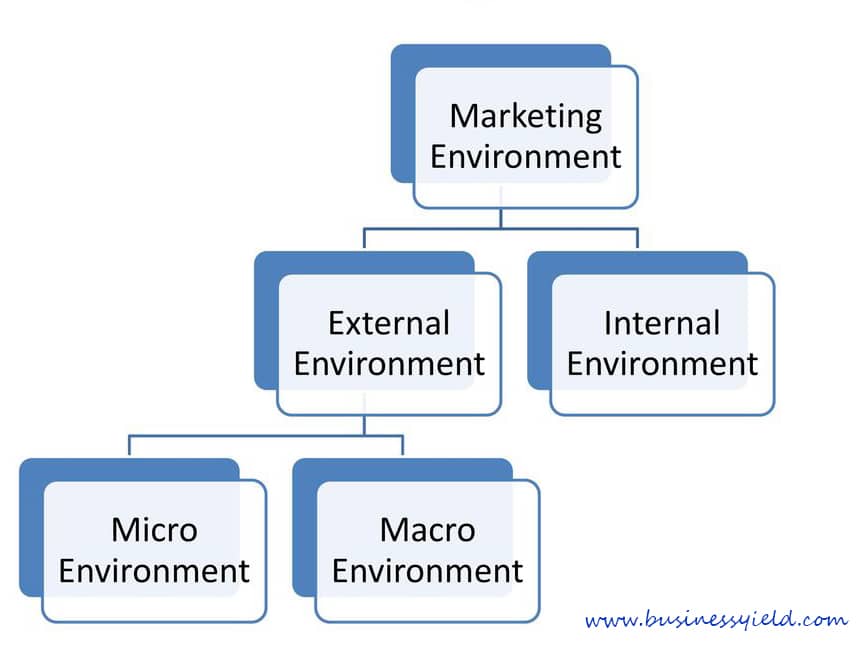Creating an online portfolio is an essential step for showcasing your skills, achievements, and personal brand to potential employers, clients, and collaborators. A well-designed and engaging online portfolio can help you stand out from the competition and make a lasting impression.
As a professional with years of experience in the field, I have seen the power of a well-crafted online portfolio. It not only helps you showcase your work but also allows you to connect with like-minded individuals and build a network of professionals. In this article, I will share my insights and experiences to help you create a stand-out online portfolio that can help you achieve your career goals.
What is an Online Portfolio?
An online portfolio is a digital collection of information about your past work, experiences, qualifications, skills, or accolades that you want to share on the web. It gives legitimacy to your work and provides industry professionals with a better understanding of what you can do.
Key Takeaways
- An online portfolio is a digital collection showcasing work, experiences, and skills, serving as a powerful tool for freelancers, job seekers, creative professionals, entrepreneurs, students, visual professionals, consultants, and business owners.
- Essential elements of an effective online portfolio include a home page, about section, work samples, contact information, resume/CV, testimonials, social media integration, and a blog or news section, all tailored to showcase unique skills and strengths.
- Online portfolios are instrumental for showcasing work, building a professional brand, attracting clients or employers, facilitating networking and collaboration, and serving as a platform for personal reflection and professional growth.
- To create a standout online portfolio, one should be authentic, choose the right platform, display the best work, tell a compelling story, showcase the creative process, optimize for visual appeal, include testimonials, and regularly update the portfolio.
- Ten free websites to create an online portfolio include Behance, Squarespace, Wix, WordPress, Cargo, Dribbble, Carbonmade, Adobe Portfolio, Format, and Crevado, each offering unique features and customization options for different professional needs.
Who Needs an Online Portfolio
An online portfolio can be beneficial for various individuals and professionals. Some groups of people who can benefit from having an online portfolio include:
- Freelancers
- Job seekers
- Creative Professionals
- Entrepreneurs
- Students
- Professional in the Visual Field
- Consultants
- Business Owners
#1. Freelancers
Freelancers from various fields, such as graphic designers, photographers, writers, web developers, and artists, can showcase their work and attract potential clients through an online portfolio.
#2. Job Seekers
Job seekers can use an online portfolio to supplement their resumes and provide visual evidence of their skills and accomplishments. It allows them to stand out from other candidates and demonstrate their expertise to potential employers.
#3. Creative Professionals
Professionals in creative fields, including designers, artists, architects, and musicians, can use an online portfolio to showcase their creative projects, highlight their unique styles, and attract new opportunities.
#4. Entrepreneurs
Entrepreneurs can use an online portfolio to showcase their previous projects, highlight their expertise, and build credibility with potential investors, partners, or clients.
#5. Students
Students can create an online portfolio to showcase their academic achievements, projects, internships, and extracurricular activities. It can be a valuable tool when applying for scholarships, internships, or further education.
#6. Professionals in Visual Fields
Professionals in visual fields, such as photographers, videographers, fashion designers, and interior designers, can use an online portfolio to display their visual work and attract potential clients or collaborators.
#7. Consultants
Consultants and experts in various industries can use an online portfolio to showcase their knowledge, expertise, and past successful projects. It can help them attract new clients and establish themselves as thought leaders in their field.
#8. Business Owners
Business owners can use an online portfolio to showcase their products, services, and success stories. It can serve as a powerful marketing tool to attract potential customers and clients.
Elements of an Online Portfolio
When I was creating my online portfolio, there were several key elements that I considered including. The specific elements you include in your online portfolio may vary depending on your industry, target audience, and personal preferences. It’s important to tailor your portfolio to showcase your unique skills and strengths.
Here are some of the essential elements:
- Home Page: The home page serves as an introduction to your portfolio website. It should provide a brief overview of who you are and what you do.
- About Section: The About section is an opportunity to share more details about yourself, including your background, experience, and interests.
- Work Samples: Showcase your best work samples in a dedicated portfolio or work section. Use high-quality images, videos, or case studies to demonstrate your skills and expertise.
- Contact Information: Make it easy for visitors to get in touch with you by including your contact information, such as your email address or a contact form.
- Resume/CV: Include a section where you can upload or link to your resume or curriculum vitae. This provides additional information about your education, work experience, and skills.
- Testimonials and Reviews: Display testimonials or reviews from satisfied clients or employers to build credibility and trust.
- Social Media Integration: Link to your social media profiles, such as LinkedIn, Twitter, or Instagram, to provide additional ways for visitors to connect with you and see more of your work.
- Blog or News Section: If relevant to your field, consider including a blog or news section where you can share your thoughts, insights, or updates on your work.
- Design and presentation: The design and presentation of your portfolio website should be visually appealing and reflect your brand. It should be easy to navigate, mobile-friendly, and optimized for search engines.
Uses of an Online Portfolio
An online portfolio can serve various purposes and be useful for different individuals.
- Showcasing Work
- Building a Professional Brand
- Attracting Clients or Employers
- Networking and Collaboration
- Personal and Reflection
- Educational Purposes
- Professional Growth and Learning
- Personal Promotion and Recognition
#1. Showcasing Work
An online portfolio provides a platform to display your best work, whether you’re an artist, designer, photographer, writer, or any other creative professional. It allows you to present your work in a visually appealing and accessible manner, making it easier for potential clients, employers, or collaborators to view and evaluate your skills and expertise.
#2. Building a Professional Brand
An online portfolio helps you establish and promote your professional brand. It allows you to showcase your unique style, voice, and approach to your work. By curating your portfolio with your best projects and highlighting your strengths, you can create a strong and memorable brand image.
#3. Attracting Clients or Employers
An online portfolio serves as a powerful marketing tool to attract clients or employers. It allows you to demonstrate your capabilities, experience, and achievements, making it easier for potential clients or employers to assess your suitability for their projects or job openings. It can increase your visibility and credibility, leading to more opportunities.
#4. Networking and Collaboration
An online portfolio provides a platform for networking and collaboration. It allows you to connect with other professionals in your field, share your work with a wider audience, and collaborate on projects. It can help you establish valuable connections and partnerships.
#5. Personal and Reflection
An online portfolio can be a tool for personal development and reflection. By documenting and organizing your work, you can track your progress, identify areas for improvement, and set goals for your future projects. It allows you to reflect on your achievements and learn from your experiences.
#6. Educational Purposes
Students can use an online portfolio to showcase their academic work, projects, and achievements. It can be a valuable tool for college applications, internships, or job interviews. It allows students to demonstrate their skills, creativity, and growth over time.
#7. Professional Growth and Learning
An online portfolio can be a platform for continuous professional growth and learning. By regularly updating your portfolio with new projects and experiences, you can showcase your ongoing development and adaptability. It encourages you to stay engaged and motivated in your field.
#8. Personal Promotion and Recognition
An online portfolio allows you to promote yourself and gain recognition for your work. It provides a space to share your portfolio with a wider audience through social media, professional networks, or personal branding efforts. It can help you establish yourself as an expert or thought leader in your field.
How to Create an Outstanding Online Portfolio
From my experience, to create an online portfolio that stands out, you can consider the following tips:
- Be Yourself
- Choose the Right Platform
- Display Your Best Work
- Tell a Compelling Story
- Showcase Your Process
- Optimize for Visual Appeal
- Include Testimonials or Reviews
#1. Be Yourself
Your portfolio should reflect your unique style, personality, and skills. Avoid copying someone else’s design and focus on creating an original website that showcases who you are and what you do.
#2. Choose the Right Platform
Use a platform that allows you to easily create and update your portfolio. Consider options like Adobe Portfolio, Squarespace, or Wix for building your website.
#3. Display Your Best Work
Select your strongest and most relevant projects to showcase in your portfolio. Highlight your skills, creativity, and problem-solving abilities by including a variety of work samples that demonstrate your range.
#4. Tell a Compelling Story
Use your portfolio to tell a story about your work and achievements. Explain the challenges you faced, the solutions you provided, and the impact of your work. This helps potential clients or employers understand your process and the value you bring.
#5. Showcase Your Process
Demonstrate your design process and problem-solving skills by including sketches, wireframes, prototypes, or case studies. This gives insight into your approach and helps clients or employers understand your methodology.
#6. Optimize for Visual Appeal
Ensure your portfolio has an attractive and visually appealing design. Use high-quality images, clear typography, and a layout that is easy to navigate. Consider the overall aesthetics and user experience of your portfolio.
#7. Include Testimonials or Reviews
Incorporate testimonials or reviews from satisfied clients or employers to build credibility and trust. This can help potential clients or employers understand the positive impact of your work.
8. Regularly Update Your Portfolio
Keep your portfolio up to date by regularly adding new projects and removing outdated content. This shows that you are actively engaged in your field and continuously producing high-quality work.
Nonetheless, creating a killer online portfolio is an ongoing process. Continuously iterate, refine, and improve your portfolio to ensure it remains relevant and impactful.
10 Free Websites To Create An Online Portfolio
Creating an online portfolio is a great way to showcase your work and skills to potential clients or employers. From my experience, I’ve crafted together 10 free websites that you can use to create an impressive online portfolio. They include:
- Behance
- Squarespace
- Wix
- WordPress
- Cargo
- Dribbble
- Carbonmade
- Adobe Portfolio
- Format
- Crevado
#1. Behance
Behance is a popular free portfolio website that allows freelancers from different industries to showcase their work and skills. It is part of the Adobe family and offers a user-friendly platform for creating and sharing portfolios.
#2. Squarespace
Squarespace provides professionally designed website templates for artists, photographers, and more. It offers a range of customizable options to create a visually appealing portfolio website.
#3. Wix
Wix is a website builder that offers a variety of templates and features to create a stunning portfolio website. It provides drag-and-drop functionality, making it easy to customize your portfolio according to your preferences.
#4. WordPress
WordPress is a popular content management system that allows you to create a portfolio website with ease. It offers a wide range of themes and plugins to customize your portfolio and showcase your work effectively.
#5. Cargo
Cargo is a free portfolio website that focuses on showcasing visual work, such as photography, design, and art. It offers a clean and minimalist interface to highlight your portfolio.
#6. Dribbble
Dribbble is a platform for designers to showcase their work and connect with other professionals. It allows you to create a portfolio and share your design projects with a community of like-minded individuals.
#7. Carbonmade
Carbonmade is a portfolio website that caters to creative professionals. It offers a simple and intuitive interface to create a visually appealing portfolio and showcase your work effectively.
#8. Adobe Portfolio
Adobe Portfolio is a free portfolio website that integrates seamlessly with Adobe Creative Cloud. It allows you to create a portfolio using customizable templates and easily update your work from Adobe applications.
#9. Format
Format is a portfolio website builder that offers a range of customizable templates for photographers, designers, and other creative professionals. It provides features like client proofing and e-commerce integration to enhance your portfolio.
#10. Crevado
Crevado is a free portfolio website that offers a user-friendly interface and customizable templates. It allows you to showcase your work in a professional and visually appealing manner.
These free websites provide a variety of options and features to create an online portfolio that stands out and effectively showcases your work and skills. Whether you are a freelancer, artist, photographer, or designer, these platforms can help you create a professional online presence and attract potential clients or employers.
Which Portfolio Is Better To Have Online Or Offline?
The decision between having an online or offline portfolio depends on various factors and personal preferences. An online portfolio offers accessibility, reach, searchability, interactivity, ease of updates, and analytics. On the other hand, an offline portfolio provides a tangible presentation, control over design and layout, portability, high-quality print representation, and privacy and security. It offers a personal and interactive experience, complete control over presentation, and a level of privacy and security. Ultimately, many professionals choose to have both an online and offline portfolio to leverage the advantages of each format.
Some free portfolio websites may have hidden costs associated with them. These costs can include charges for premium features, limitations on storage and bandwidth, ads displayed on your portfolio, fees for e-commerce functionality, and the need to purchase a custom domain separately. It is important to review the pricing and features of each platform to understand any potential hidden costs before choosing a portfolio website.
Is It Necessary To Have Technical Skills To Create An Online Portfolio?
No, it is not necessary to have technical skills to create an online portfolio. While technical skills may be beneficial for certain types of portfolios, such as those in the tech industry, there are various portfolio platforms and templates available that cater to individuals from different backgrounds and skill sets. Online portfolios can showcase a wide range of skills, including design, writing, research, marketing, and more. The focus of an online portfolio is to highlight your projects, achievements, and skills relevant to your field or industry.
How Can I Track the Performance of My Online Portfolio?
To track the performance of your online portfolio, you can use portfolio tracking tools and apps such as Sharesight, Seeking Alpha Premium, Empower, WallStreetZen, Personal Capital, or Quicken. These tools offer features like automatic tracking, performance reporting, charting against benchmarks, and insights into your portfolio’s performance and asset allocation. It’s important to explore different options and choose the tool that best suits your needs.
Conclusion
To wrap up our journey through the realm of online portfolio creation, bear in mind that each platform serves as a canvas for your distinctive narrative. Take advantage of the opportunity to authentically display your skills, guided by personal encounters. Armed with insights from these 10 free websites, step into the digital arena, ensuring your portfolio not only stands out but truly dominates. Let your personal touch resonate, making a lasting impact in the professional sphere.
- TOP 23 PROFESSIONAL SKILLS TO PUT ON YOUR RESUME
- Photography Business Cards: Free Templates, Samples, Ideas, Tools (+ Quick Guide)
- PORTFOLIO MANAGEMENT SOFTWARE: Top Investment Software In 2023
- PROJECT PORTFOLIO MANAGEMENT: Meaning, Top Software, Processes & Benefits
- Business Portfolio Template and Examples: How To Create One






